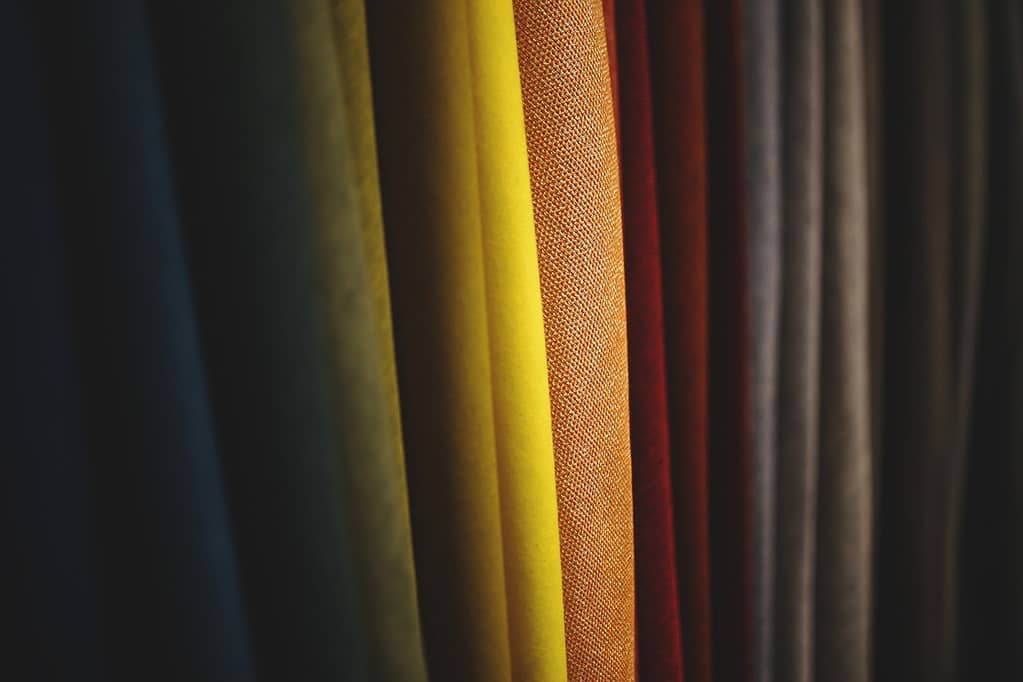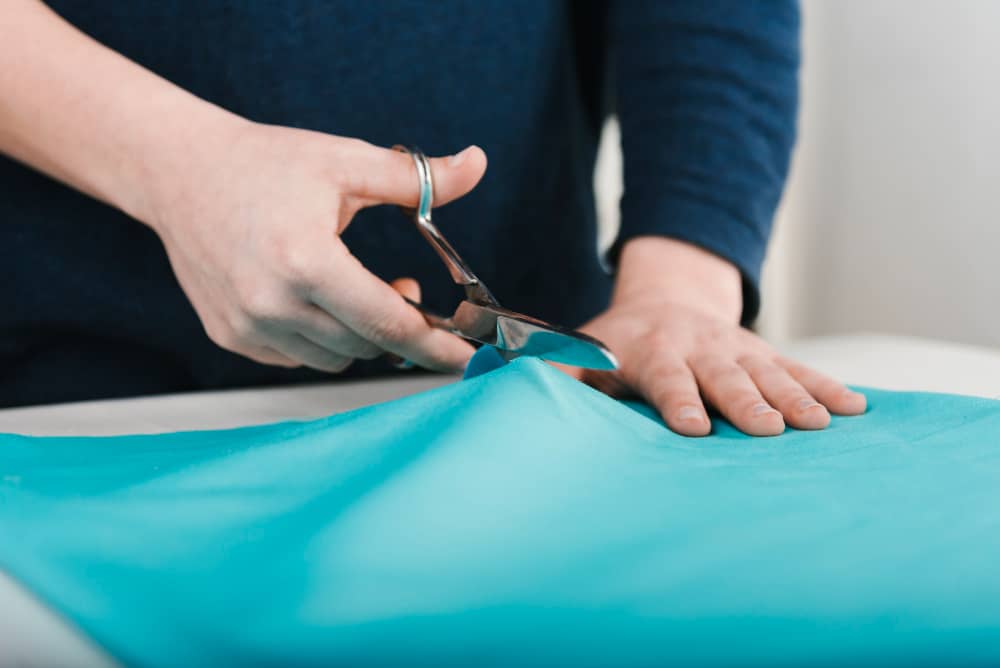Home » Nylon
Why Nylon Fabric is Your Go-To for Longevity
When it comes to choosing fabrics for our clothing and other everyday items, durability and longevity are key factors to consider. One fabric that has stood the test of time in terms of strength and resilience is Nylon fabric. Nylon, a synthetic fabric known for its incredible durability, has become a popular choice for a wide range of applications. In this blog post, we will delve into why Nylon fabric is your go-to option when it comes to longevity.

A Brief History of Nylon Fabric
The journey of Nylon fabric into the mainstream began in the early 1930s, under the stewardship of the American conglomerate DuPont. This period marked the dawn of Nylon as the world’s first entirely synthetic fibre, engineered as an alternative to silk. Its introduction revolutionised the fabric industry, propelling Nylon to prominence due to its superior tensile strength and elasticity. These attributes rendered it an exemplary material for an array of applications, transcending the boundaries of mere clothing.
With the outbreak of the Second World War, Nylon’s potential was leveraged in the military domain, where it was utilised for making parachutes, tents, and other essential equipment. This not only showcased its versatility but also underscored its reliability under extreme conditions, thereby cementing its reputation for unparalleled durability. Post-war, the use of Nylon expanded beyond military applications, infiltrating the civilian market with a plethora of products ranging from stockings and sportswear to carpets and car parts.
The evolution of Nylon fabric is a testament to human ingenuity, marking a significant departure from natural fibres towards synthetic alternatives capable of offering enhanced performance characteristics. This shift was not merely a technological breakthrough but also signalled a change in consumer preferences, with an increasing demand for materials that combined functionality with durability. Nylon’s adaptability across various sectors is indicative of its intrinsic properties, which have ensured its continued relevance in a rapidly changing world.
As we traverse through the decades, the enduring legacy of Nylon fabric continues to influence the development of new materials and technologies. Its history is a narrative of innovation and resilience, reflecting a relentless pursuit to create fabrics that meet the evolving needs of society. The story of Nylon is far from over, as it remains at the forefront of the fabric industry, embodying the spirit of progress that defines the modern age.
The Remarkable Properties of Nylon
Nylon fabric’s exceptional attributes have made it a cornerstone in the manufacture of a wide variety of products, emphasising its dominance in terms of strength and resilience. Among its notable characteristics is its incredible tensile strength, enabling the material to retain its shape and integrity even under significant stress. This quality is particularly advantageous for items that are frequently subjected to rigorous use, as it ensures they remain durable over time.
Another essential aspect of Nylon fabric is its resistance to abrasion. This property is indispensable for products that encounter constant friction or are used in rough environments, as it significantly reduces the likelihood of wear and tear. Such resistance extends the life of garments and gear, providing consumers with value for money due to the extended usability of their Nylon-made items.
Additionally, Nylon fabric exhibits a rapid drying capability, an attribute that sets it apart from many other materials. This quality is especially beneficial for outdoor and sportswear, as it ensures comfort and convenience by reducing the time it takes for these items to dry after exposure to moisture. This feature not only enhances the user experience but also contributes to the maintenance of the fabric’s condition over time, as prolonged dampness can lead to degradation in some materials.
Furthermore, the material’s resilience to mould and mildew growth due to its moisture-wicking properties further underscores its suitability for a range of applications, from activewear to outdoor equipment. This resistance helps in preserving the aesthetic and functional qualities of Nylon products, ensuring they remain in excellent condition even in damp or humid conditions.
These attributes of Nylon fabric underline its position as a superior choice for those seeking materials that offer enduring performance. Its synthesis of strength, abrasion resistance, and quick-drying nature makes it an indispensable fabric in the realms of fashion, sport, and beyond.

Nylon vs Other Synthetic Fabrics
In the realm of synthetic fabrics, Nylon stands out for its unparalleled durability and strength, distinguishing itself from alternatives such as polyester, acrylic, and rayon. Whilst polyester is celebrated for its wrinkle resistance and low maintenance, it does not match Nylon’s superior tensile strength and resistance to abrasion. These qualities are crucial for items subjected to intensive use or harsh conditions, making Nylon the preferred fabric for such applications.
Acrylic and rayon, on the other hand, offer different advantages including softness and colour vibrancy. However, when it comes to enduring the rigours of daily wear and tear, they fall short in comparison to Nylon. This is particularly evident in outdoor and sporting applications, where Nylon’s robustness against abrasion and its quick-drying properties are indispensable.
Furthermore, the moisture-wicking capability of Nylon ensures that garments and equipment do not retain moisture, a feature that is less pronounced in polyester, acrylic, and rayon. This characteristic not only contributes to the comfort of the wearer but also aids in the longevity of the fabric, preventing the breakdown of material through mould or mildew growth.
It is the combination of these properties – high tensile strength, exceptional abrasion resistance, and superior moisture management – that positions Nylon as a front-runner in the synthetic fabric domain. Whilst other fabrics may offer specific benefits in terms of aesthetics or feel, Nylon’s comprehensive suite of functional advantages makes it the material of choice for applications demanding durability and long-term performance.
Environmental Impact and Sustainability Concerns
The production and disposal of Nylon fabric present significant environmental challenges that cannot be overlooked. As a product of petrochemical processes, the manufacture of Nylon contributes to the depletion of fossil fuels, a finite resource. This process also releases greenhouse gases into the atmosphere, exacerbating global warming and climate change. In addition, the non-biodegradable nature of Nylon means that garments and products made from this fabric persist in the environment long after their usable life has ended, contributing to the growing problem of plastic pollution in our oceans and on land.

Despite these challenges, strides are being made in addressing the sustainability issues associated with Nylon fabric. Innovations in recycling processes have opened up pathways for repurposing Nylon waste, transforming it into new fibres without the need for virgin raw materials. This circular approach not only reduces the reliance on petrochemicals but also minimises the volume of waste sent to landfills. Moreover, research into bio-based alternatives for Nylon production is gaining momentum. Scientists are exploring renewable resources as potential substitutes for traditional petrochemicals, aiming to create a more sustainable lifecycle for Nylon products.
The industry’s response to environmental concerns signifies a shift towards greater ecological responsibility. By investing in recycling technologies and exploring greener production methodologies, the fabric sector aims to mitigate the adverse impacts of Nylon. While these efforts represent a positive step forward, the path to a fully sustainable Nylon fabric is complex and requires continued innovation and collaboration across the global supply chain. The engagement of consumers, manufacturers, and policymakers alike is crucial in driving the transition towards more environmentally friendly practices in the world of synthetic fabrics.

The Future of Nylon Fabric
The prospect of Nylon fabric is intricately tied to innovations aimed at enhancing its environmental sustainability. With the escalating global focus on reducing environmental degradation, the textile industry is at a pivotal juncture, pressing forward with initiatives designed to diminish the ecological footprint of synthetic fabrics. The advancement towards more sustainable practices in Nylon production and disposal is gathering pace, driven by both technological breakthroughs and shifting consumer expectations.Emerging technologies in the recycling realm are playing a crucial role, enabling the transformation of Nylon waste into high-quality fibres.
This not only circumvents the use of virgin petrochemicals but also significantly curtails landfill contributions. The exploration of bio-based polymers as alternatives to traditional Nylon constituents further exemplifies the industry’s commitment to green innovation. These novel materials, derived from renewable resources, promise a reduction in the reliance on fossil fuels, aligning Nylon production with the principles of sustainability.The trajectory towards a more sustainable future for Nylon also hinges on collaborative efforts across the supply chain. Manufacturers are increasingly adopting eco-conscious practices, from utilising recycled materials to investing in energy-efficient processes. Moreover, consumers are showing a heightened preference for sustainable products, which in turn encourages brands to pursue environmentally friendly options.Looking ahead, the focus will undoubtedly remain on enhancing the recyclability of Nylon and reducing its environmental impact through innovative solutions. The integration of cutting-edge technologies with responsible manufacturing and consumption practices is expected to pave the way for a new generation of Nylon fabrics. These developments not only promise to maintain the material’s valued characteristics but also to secure its place in a more sustainable and environmentally aware society.